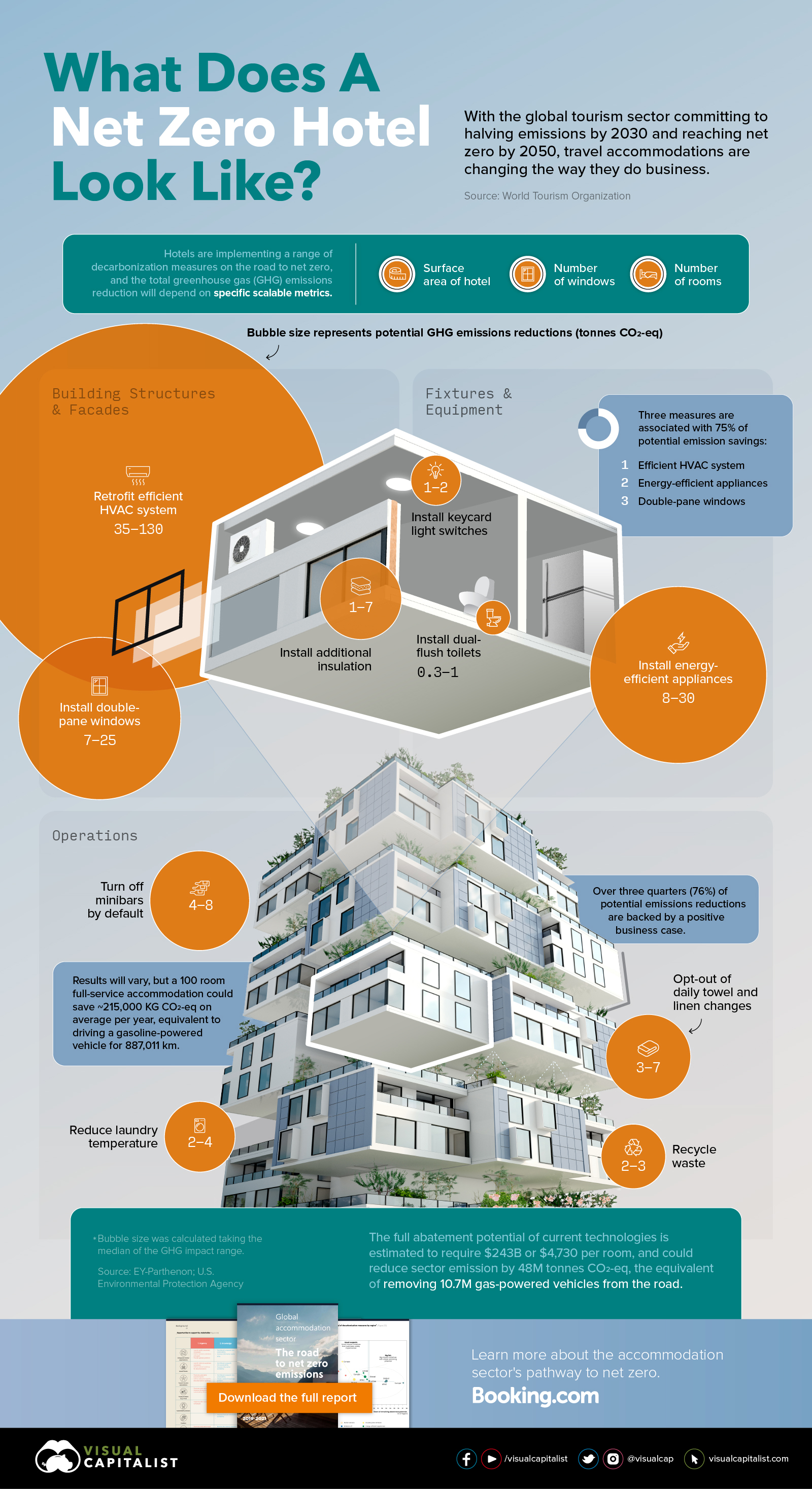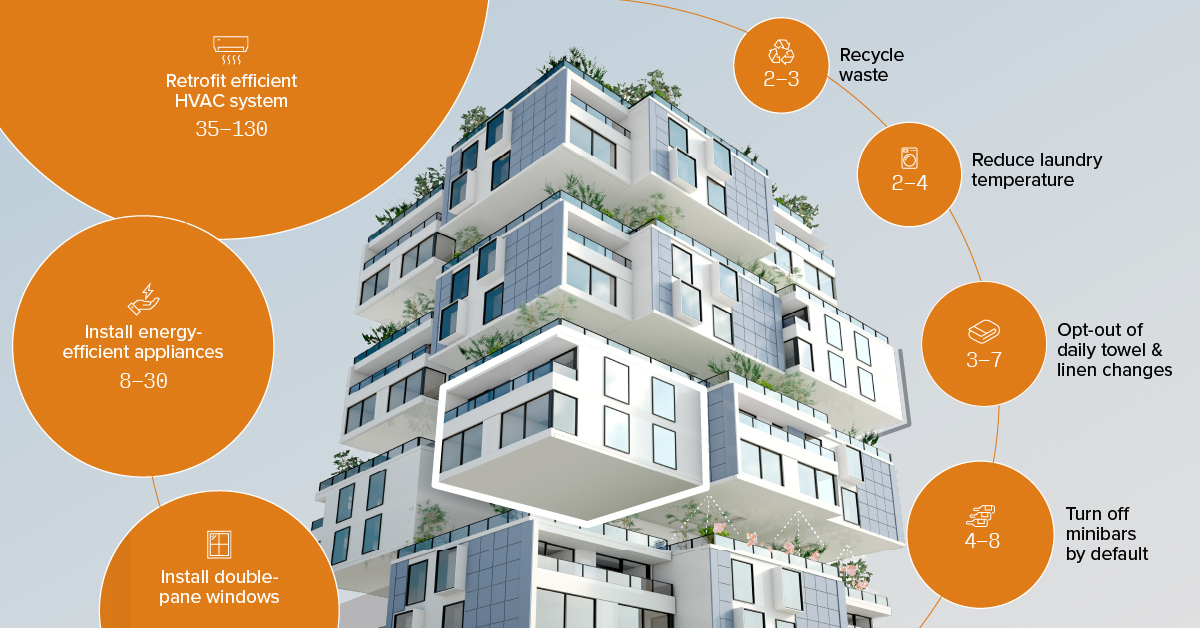What Does A Net Zero Hotel Look Like?
What Does A Net Zero Hotel Look Like?
At COP26 in Glasgow, the global tourism industry committed to halving emissions by 2030 and reaching net zero by 2050. In addition, a recent survey found that over three-quarters of travelers say they want to travel more sustainably in the coming year.
And the accommodation sector is listening.
In this infographic for our sponsor, Booking.com, we look at how hotels might evolve to meet the climate challenge.
Saving the Climate, One Light Bulb at a Time
The data in this graphic comes from a recent study by EY-Parthenon (commissioned by Booking.com) that identified a number of existing carbon-saving initiatives that accommodations could adopt right now to reduce their carbon footprint.
While no single initiative can bring a hotel’s emissions to zero, taken together they add up to big savings. Collectively, the entire sector could reduce their emissions by 48 million tonnes CO2-eq, equivalent to removing 10.7 million gas-powered cars from the road for a year.
Here is the full list of 24 carbon-saving initiatives considered in the report.
| Initiative | Potential GHG Emissions Reduction (tonnes CO2-eq) |
|---|---|
| Retrofit efficient HVAC system | 35-130 |
| Install energy efficient appliances | 8-30 |
| Install double-pane windows | 7-25 |
| Install sunshading on windows | 1-25 |
| Install low-flow fixtures | 4-19 |
| Use energy efficient lighting | 3-9 |
| Turn off minibars by default | 4-8 |
| Opt-out of daily towel & linen changes | 3-7 |
| Install (more) insulation | 1-7 |
| Reduce laundry temperature | 2-4 |
| Electrify vehicle fleet | 3-4 |
| Recycle waste | 2-3 |
| Install smart lift software | 1-3 |
| Install key card switch in guest rooms | 1-2 |
| Install motion sensors in corridors for lighting | 0.4-2 |
| Install efficient pool pumps | 0.8-1 |
| Place a pool cover | 0.7-1 |
| Install dual flush toilets | 0.3-1 |
| Introduce paperless procedures | ~0.7 |
| Limit food waste | ~0.7 |
| Eliminate disposables | 0.4-0.6 |
| Collect rainwater | 0.021-0.033 |
| Develop native gardens | 0.008-0.013 |
| Install smart irrigation system | 0.06-0.013 |
Individual Results May Vary
Not every initiative will apply to every operation, and the actual impact will vary according to the size of the hotel and where it is located. A Canadian hotel would use more heating than one located in the sunny Bahamas, for example.
At the same time, the impact will depend on several scalable metrics, such as the number of rooms or windows.
But to give you some idea of the individual impact, a full-service hotel with 100 rooms, a pool, and a garden, based in a tropical climate, could reduce their carbon footprint by 215 tonnes CO2-eq.
Taking Stock
If you’ve stayed at a hotel recently, you may have seen some of these initiatives in action.
Energy-efficient lighting, for example, is almost an industry standard and has been implemented in over 80% of accommodations. Pool covers on the other hand, have been implemented in under 30%, perhaps due to the lack of awareness of that option. Overall, the global adoption average is 45%.
But even that rate has already earned a climate dividend. With the current level of adoption, the sector has already eliminated 39 million tonnes CO2-eq in emissions. The 48 million tonne figure quoted earlier, would be on top of that.
OK, But How Much Does it Cost?
The tourism industry and hotels in particular were among the worst hit during the COVID-19 pandemic and are still making up lost ground. International arrivals were still down 37% in 2022, and the hotel and resort sector was worth $1.06 trillion in 2022 according to Statista, down from a 2019 peak of $1.52 trillion.
Add inflation, a cost of living crisis, and rising energy prices and you can see why hotel owners might balk at the upfront costs of $4,750 per room or $243 billion for the entire sector.
Even so, it’s worth noting that most of these initiatives could recover their initial investment in energy savings within 15 years. In fact, 76% of the abatement potential is associated with a positive business case. And if you factor in the climate change cachet associated with these initiatives, and the draw that a program like Booking.com’s Travel Sustainable badge or a certification by the Global Sustainability Travel Council creates for travelers, hotels are beginning to see the merits of investing.
The Journey Ahead
Hotels and accommodations account for an estimated 264 million tonnes of CO2-eq in direct and controllable emissions, also known as scope 1 and scope 2 emissions. So even after all these measures are implemented, there will still be 216 million tonnes of CO2-eq left to tackle.
And with global average temperatures already 1°C above pre-industrial levels, it’ll be a big job for hotels and other accommodations to eliminate their share in time. But they have a plan on how to get there.

Click this link to read The Road to Net Zero report and learn more about the sector’s pathway to net zero.

-

 Environment7 days ago
Environment7 days agoTop Countries By Forest Growth Since 2001
One country is taking reforestation very seriously, registering more than 400,000 square km of forest growth in two decades.
-
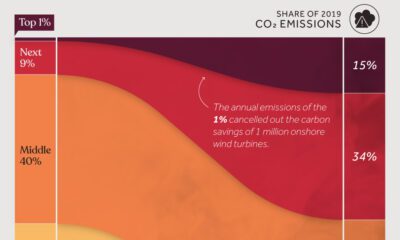
 Green4 months ago
Green4 months agoCharted: Global CO2 Emissions by Income Group
We visualize global CO2 emissions by income group, showing the impact of different wealth brackets on carbon generation.
-
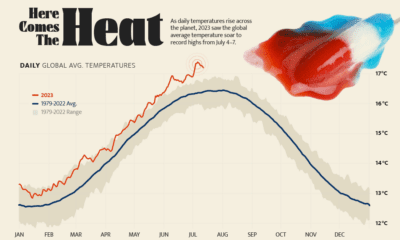
 Green9 months ago
Green9 months agoHotter Than Ever: 2023 Sets New Global Temperature Records
Four days straight in July 2023 set or equaled global temperature records on average.
-
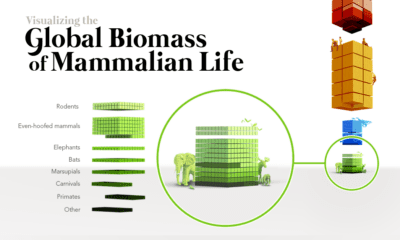
 Science12 months ago
Science12 months agoVisualizing the Biomass of All the World’s Mammals
When the world’s biomass—the stuff we’re made of—is tallied up, humans and cattle outweigh wild mammals by a massive margin.
-
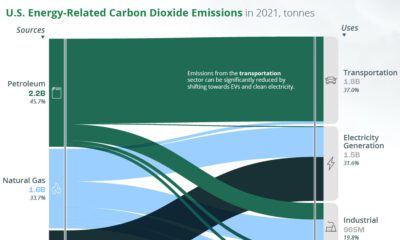
 Green1 year ago
Green1 year agoVisualizing the Flow of Energy-Related CO2 Emissions in the U.S.
A look at the flow of energy-related CO2 emissions from the sources that generate energy to the sectors that use it.
-
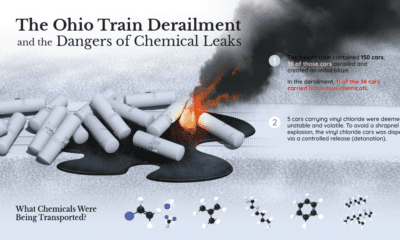
 Misc1 year ago
Misc1 year agoExplainer: What to Know About the Ohio Train Derailment
A train transporting a number of potentially dangerous chemicals derailed near the Ohio–Pennsylvania border. This infographic explains what happened

